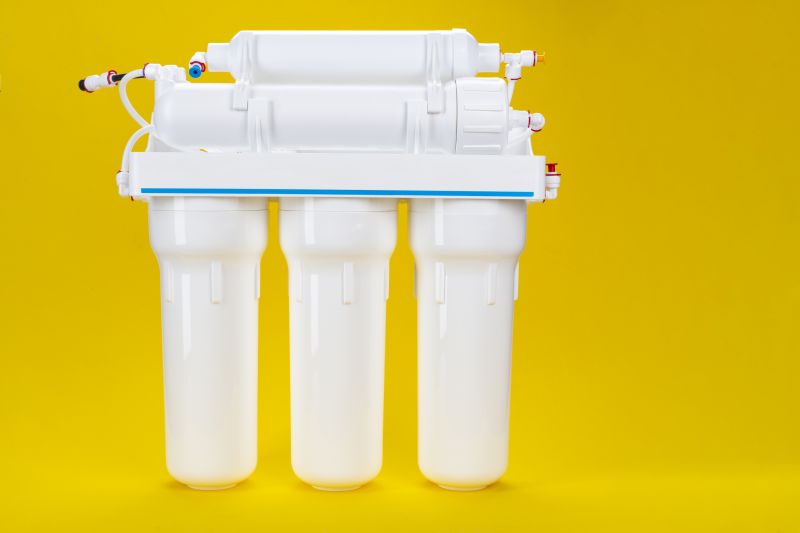Top Water Treatment Products for Clean and Safe Drinking Water
Explore the leading solutions that ensure water purity, improve taste, and protect your health with reliable treatment options.
 Water treatment products encompass a wide range of solutions designed to improve water quality for various uses, including drinking, bathing, and household cleaning. These products are essential for removing contaminants, reducing impurities, and ensuring water safety and clarity. From simple filtration devices to complex purification systems, the options available can cater to different needs and budgets. Understanding the features and functions of these products can help consumers select the most suitable solutions for their specific water quality concerns.
Water treatment products encompass a wide range of solutions designed to improve water quality for various uses, including drinking, bathing, and household cleaning. These products are essential for removing contaminants, reducing impurities, and ensuring water safety and clarity. From simple filtration devices to complex purification systems, the options available can cater to different needs and budgets. Understanding the features and functions of these products can help consumers select the most suitable solutions for their specific water quality concerns.
Types of Products For Water Treatments
Activated Carbon Filters
Effective at reducing chlorine, odors, and organic compounds, these filters improve water taste and clarity.
Reverse Osmosis Systems
Utilize semi-permeable membranes to remove a broad spectrum of impurities, including salts and heavy metals.
UV Water Sterilizers
Use ultraviolet light to neutralize bacteria and viruses, enhancing water safety.
Whole House Water Filters
Designed to treat water at the point of entry, providing filtered water for all household outlets.
Countertop Water Purifiers
Portable units that connect directly to faucets for convenient point-of-use filtration.
Under-Sink Water Filters
Installed beneath the sink to provide filtered water directly from the tap.
Water Softeners
Reduce hard water minerals like calcium and magnesium to prevent scale buildup.
Alkaline Water Filters
Increase water pH levels for potentially improved hydration and taste.
Mineral Enhancer Filters
Add essential minerals back into purified water for better taste and health benefits.
Portable Water Filters
Compact devices suitable for travel or outdoor use, providing on-the-go water purification.
Ceramic Water Filters
Use porous ceramic elements to trap bacteria and sediments, suitable for basic filtration needs.
Distillation Units
Boil water and condense the vapor to remove impurities, including heavy metals and microorganisms.
Ion Exchange Filters
Exchange harmful ions for benign ones, commonly used for water softening and deionization.
Chemical Water Purifiers
Use disinfectants or chemical treatments to eliminate bacteria and viruses, often used in emergency kits.
Popular Choices
Easy to install and portable, ideal for quick access to filtered water at the tap.
Provide convenient, high-quality drinking water with minimal countertop space usage.
Widely used for comprehensive purification, suitable for households with specific water quality concerns.
Popular for added microbiological safety, especially in areas with contaminated water sources.
Provide filtered water throughout the entire home, reducing sediment and impurities at the source.
Commonly used to treat hard water, preventing scale buildup and improving appliance longevity.
Popular for outdoor activities and travel, offering on-demand purification in remote locations.
Affordable and effective for basic sediment and bacteria removal, suitable for rural or emergency use.
Gaining popularity for those seeking water with increased pH and mineral content.
Used to improve taste and add beneficial minerals to purified water.
Many water treatment devices employ multiple methods such as activated carbon filtration, reverse osmosis, UV sterilization, and mineral enhancement to address different contaminants. Activated carbon filters are effective at reducing chlorine, odors, and some organic compounds, making tap water taste better. Reverse osmosis systems can remove a broad spectrum of impurities, including heavy metals, salts, and microorganisms, often used in households requiring high purity water. UV sterilizers utilize ultraviolet light to neutralize bacteria and viruses, providing an additional layer of safety.
Choosing the right water treatment product involves considering factors like water source, specific contaminants present, flow rate, maintenance requirements, and installation space. Some systems are designed for point-of-use applications, such as under-sink filters or countertop units, while others serve whole-house needs. Regular maintenance, such as filter replacement and system sanitization, is crucial to ensure continued performance. By evaluating these aspects, consumers can find solutions that align well with their water quality goals and household needs.
Key Buying Considerations
- Identify the specific contaminants present in your water source through testing.
- Determine whether a point-of-use or whole-house system best suits your needs.
- Consider flow rate and capacity to ensure the system can meet household demand.
- Assess the maintenance requirements, including filter replacement frequency and costs.
- Check the installation space and compatibility with existing plumbing or fixtures.
- Understand the filtration technology used and its effectiveness against target contaminants.
- Evaluate the ease of use and convenience features such as automatic shut-off or indicator lights.
- Review the system's certifications and compliance with water safety standards.
- Consider the longevity and durability of the system components for long-term use.
- Factor in initial setup costs and ongoing expenses for replacement filters or parts.
- Look for systems that allow for customization or additional filtration stages if needed.
- Ensure availability of customer support and warranty options for peace of mind.
- Think about the water taste and mineral content preferences for your household.
- Research user reviews and ratings to gauge real-world performance and reliability.
- Verify the system's compatibility with your existing water pressure and temperature conditions.
This page contains affiliate links. We may earn a commission if you purchase through these links, which helps support our content creation efforts.
